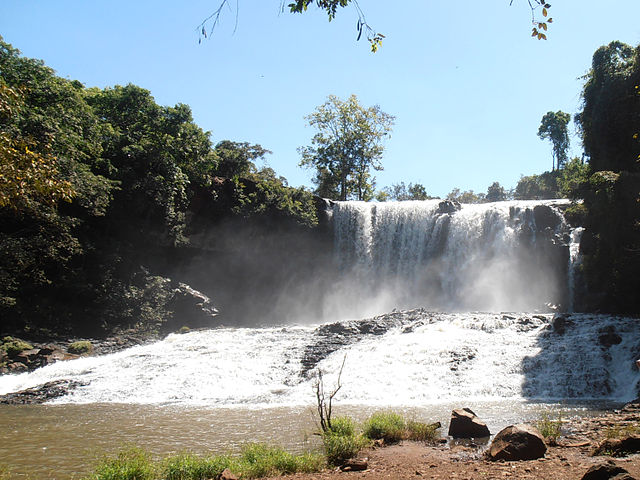
Thammasat University students who are interested in historical and comparative linguistics, language teaching and learning, political science, history, sociology, and related subjects may find a newly available book useful.
Endangered Languages in the 21st Century is an Open Access book, available for free download at this link:
https://library.oapen.org/handle/20.500.12657/61360
The TU Library collection includes several books about different aspects of endangered languages.
As the publisher’s description explains,
Endangered Languages in the 21st Century provides research on endangered languages in the contemporary world, the challenges still to be faced, the work still to be done, and the methods and practices that have come to characterize efforts to revive and maintain disadvantaged indigenous languages around the world. With contributions from scholars across the field, the book brings fresh data and insights to this imperative, but still relatively young, field of linguistics. While the studies acknowledge the threat of losing languages in an unprecedented way, they focus on cases that show resilience and explore paths to sustainable progress. The articles are also intended as a celebration of the 25 years’ work of the Foundation for Endangered Languages, and as a parting gift to FEL’s founder and quarter-century chair, Nick Ostler. This book will be informative for researchers, instructors, and specialists in the field of endangered languages. The book can also be useful for university graduate or undergraduate students, and language activists.
In Thailand, among endangered languages are Akeu, Amok, Bisu, Bru, Chong, Gong, Kensiw, Kuy, Lavua, Lua, Maniq, Mlabri, Mok, Moklen, Mon, Mpi, Nyah Kur, Pattani Malay, Saek, Sa’och, Somray, Thavung, and Urak Lawoi.

The website of the Linguistic Society of America notes,
- What does it mean to say a language is endangered?
An endangered language is one that is likely to become extinct in the near future. Many languages are failing out of use and being replaced by others that are more widely used in the region or nation, such as English in the U.S. or Spanish in Mexico. Unless current trends are reversed, these endangered languages will become extinct within the next century. Many other languages are no longer being learned by new generations of children or by new adult speakers; these languages will become extinct when their last speaker dies. In fact, dozens of languages today have only one native speaker still living, and that person’s death will mean the extinction of the language: It will no longer be spoken, or known, by anyone. […]
- What does language extinction mean for a community-and for the rest of us?
When a community loses its language, it often loses a great deal of its cultural identity at the same time. Although language loss may be voluntary or involuntary, it always involves pressure of some kind, and it is often felt as a loss of social identity or as a symbol of defeat. That doesn’t mean that a group’s social identity is always lost when its language is lost; for example, both the Chumash in California and the Manx on the Isle of Man have lost their native languages, but not their identity as Chumash or Manx. But language is a powerful symbol of a group’s identity. Much of the cultural, spiritual, and intellectual life of a people is experienced through language. This ranges from prayers, myths, ceremonies, poetry, oratory, and technical vocabulary to everyday greetings, leave- takings, conversational styles, humor, ways of speaking to children, and terms for habits, behaviors, and emotions. When a language is lost, all of this must be refashioned in the new language-with different words, sounds, and grammar- if it is to be kept at all. Frequently traditions are abruptly lost in the process and replaced by the cultural habits of the more powerful group. For these reasons, among others, it is often very important to the community itself that its language survive.
Much is lost from a scientific point of view as well when a language disappears. A people’s history is passed down through its language, so when the language disappears, it may take with it important information about the early history of the community. The loss of human languages also severely limits what linguists can learn about human cognition. By studying what all of the world’s languages have in common, we can find out what is and isn’t possible in a human language. This in turn tells us important things about the human mind and how it is that children are able to learn a complex system like language so quickly and easily. The fewer languages there are to study, the less we will be able to learn about the human mind. […]
- What can be done to preserve endangered languages?
A community that wants to preserve or revive its language has a number of options. Perhaps the most dramatic story is that of Modern Hebrew, which was revived as a mother tongue after centuries of being learned and studied only in its ancient written form. Irish has had considerable institutional and political support as the national language of Ireland, despite major inroads by English. In New Zealand, Maori communities established nursery schools staffed by elders and conducted entirely in Maori, called kohanga reo, ‘language nests’. There, and in Alaska, Hawaii, and elsewhere, this model is being extended to primary and in some cases secondary school. And in California, younger adults have become language apprentices to older adult speakers in communities where only a few older speakers are still living. A growing number of conferences, workshops, and publications now offer support for individuals, schools, and communities trying to preserve languages.
Because so many languages are in danger of disappearing, linguists are trying to learn as much about them as possible, so that even if the language disappears, all knowledge of the language won’t disappear at the same time. Researchers make videotapes, audiotapes, and written records of language use in both formal and informal settings, along with translations.
In addition, they analyze the vocabulary and rules of the language and write dictionaries and grammars. Linguists also work with communities around the world that want to preserve their languages, offering both technical and practical help with language teaching, maintenance, and revival. This help is based in part on the dictionaries and grammars that they write. But linguists can help in other ways, too, using their experience in teaching and studying a wide variety of languages. They can use what they’ve learned about other endangered languages to help a community preserve its own language, and they can take advantage of the latest technology for recording and studying languages. […]
- Is language extinction sudden or gradual?
Both. The fate of a language can be changed in a single generation if it is no longer being learned by children. This has been true for some Yupik Eskimo communities in Alaska, where just 20 years ago all of the children spoke Yupik; today the youngest speakers of Yupik in some of these communities are in their 20s, and the children speak only English. Likewise, Scots Gaelic was spoken on Cape Breton Island, Nova Scotia, until the 1940s, but by the 1970s the language was no longer being learned by children. In other cases, languages have declined much more slowly. Iroquoian languages like Onondaga and Mohawk, spoken in upstate New York and adjacent parts of Canada, have been declining for over two centuries; yet they are still spoken today by older adults and, in the case of Mohawk, some younger people as well. […]

(All images courtesy of Wikimedia Commons)
